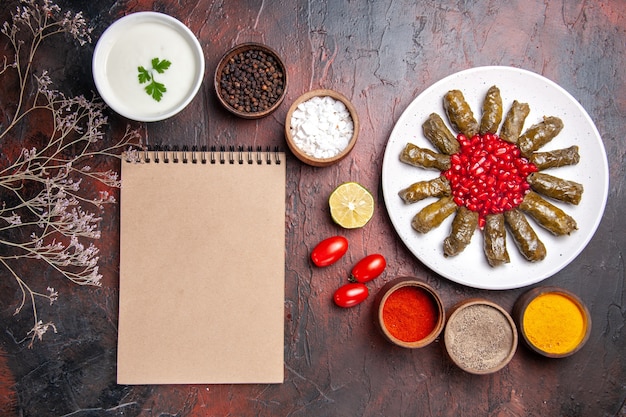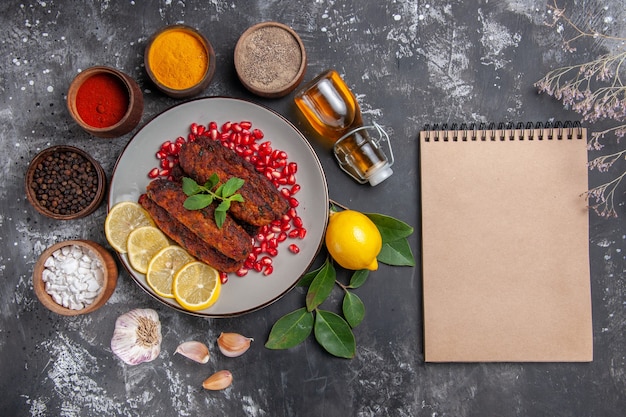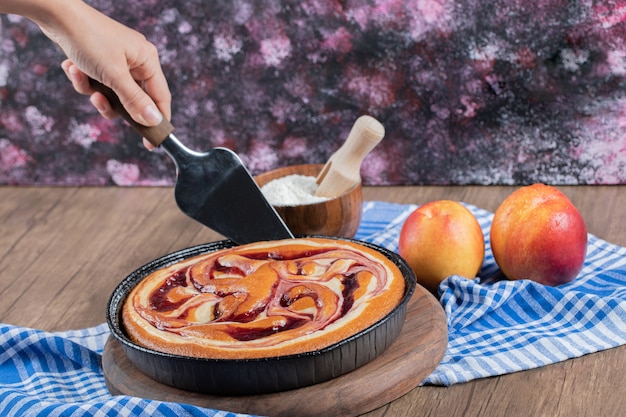You're looking to get your hands on some delicious crawfish, eh? Well, you've come to the right place! I've been cooking crawfish for years, and trust me, I've learned a thing or two. I'm not talking about fancy, fussy restaurant stuff either, no, I'm talking about the real deal, the kind that makes you lick your fingers and want more. There's nothing quite like a big pot of crawfish bubbling away on the stove, the smell filling the air, and the promise of a delicious meal that'll make you happy. So, get ready for a culinary adventure!
(Part 1) Choosing the Perfect Crawfish

The first step to a fantastic crawfish boil is finding the best crawfish. It's like, you can't make a silk purse out of a sow's ear, right? You need the right ingredients for the best results.
Where to Buy
I've always found the best crawfish at local fish markets or from trusted seafood suppliers. They usually have a great selection, and you can be sure they're fresh. You can also try bigger supermarkets, but the quality can be hit or miss. Sometimes you just gotta trust your instincts, you know?
What to Look For
When choosing your crawfish, there are a few key things to keep in mind. First, make sure they're alive! If they're not moving, they're likely not fresh. Second, check their tails. They should be curled tightly under their bodies. If they're loose, the crawfish has been dead for a while. Third, examine the shells. They should be a nice, dark colour and free of any damage. And finally, give them a sniff. They should smell fresh and a bit earthy.
Size Matters
Now, size is all about personal preference. Some people like small crawfish, others like 'em big. I personally prefer medium-sized ones. They've got just the right amount of meat to shell and enjoy. You can usually ask the fishmonger for their recommendation on size. They're usually happy to give you some advice.
(Part 2) The Art of the Boil

Right, so you've got your perfect crawfish, now it's time to get those pots bubbling! This is where the fun really begins. It's like a ritual, a Cajun symphony of flavours.
The Boil Pot
First things first, you'll need a big, sturdy pot. I'm talking about a pot that can hold at least a gallon of water. You can get away with a smaller one, but trust me, you'll be wanting more crawfish before you know it. And remember, the bigger the pot, the better those crawfish will be. They'll have more room to move around and soak up all those delicious flavours.
The Secret Sauce
Now, let's talk about seasoning. The beauty of a crawfish boil is that you can get creative and experiment. But for a classic Cajun boil, you'll need a good blend of spices. I'm talking about cayenne pepper, paprika, garlic powder, onion powder, bay leaves, and black pepper. You can add a bit of salt, but don't overdo it. You can also experiment with other spices like oregano, thyme, or even a touch of chili powder. Remember, find a balance of flavours that works for you!
The Perfect Boil
Once you've got your seasoning sorted, it's time to start boiling. Fill the pot with water, bring it to a rolling boil, and add your spices. You can add a few lemons or oranges for a bit of citrusy flavour. Then, carefully add your crawfish, making sure they're fully submerged. Now, let them cook for about 10-15 minutes, or until the shells turn a bright red. Once they're cooked, drain the water and serve them immediately. Don't forget to add some potatoes and corn on the cob to your boil – it's a classic combination that adds a hearty and satisfying element to the meal.
(Part 3) Serving Up the Feast

Alright, your crawfish are cooked, the pot is steaming, and the aroma is intoxicating. Now, it's time to get ready for the feast!
The Feasting Ground
You'll need a large surface to spread everything out. I usually use a picnic table, but you can also use a large table indoors. The key is to have plenty of space for all those crawfish, potatoes, corn, and dipping sauces.
The Essential Dipping Sauces
Now, no crawfish boil is complete without some dipping sauces. You can go classic with a simple butter and lemon sauce, or get creative with homemade sauces like remoulade, or even a spicy sriracha mayo.
The Feast Begins
It's time to dig in! And remember, the best way to eat crawfish is with your hands. You grab a crawfish by the tail, twist it off, suck out the head juices, and then peel off the shell to reveal the delicious meat. You can dip the meat in your favourite sauce, and then, when you're finished, you can throw the empty shells into a bucket or bin. It might seem messy, but it's all part of the fun!
(Part 4) Tips for Cooking Crawfish Like a Pro
So, you've got the basics down, but you're looking to take your crawfish game to the next level? Here are a few tips that will make you a crawfish-cooking pro.
Use Fresh Water
Always use fresh, clean water for your boil. You don't want to taint the taste of your crawfish with anything stale or funky. Think of it like using fresh ingredients in any other recipe – it makes a big difference!
Add a Little Citrus
As I mentioned earlier, adding a few slices of lemon or orange to your boil can add a bright, citrusy flavour that really brings out the best in your crawfish. It's like a little burst of sunshine in your pot!
Experiment with Flavours
Don't be afraid to experiment with different spices and flavours. You can add things like garlic cloves, peppercorns, herbs, or even a bit of hot sauce to your boil to create your own unique flavour profile. Have fun with it! That's what cooking is all about.
Keep it Simple
Sometimes the best things in life are simple. A basic crawfish boil with just a few key ingredients can be absolutely delicious. You don't need to overcomplicate things to have a great meal. Less is often more!
Don't Overcook
You don't want to overcook your crawfish. Overcooked crawfish will be tough and chewy, so make sure you cook them for the right amount of time. A good rule of thumb is 10-15 minutes. Just like you wouldn't overcook a steak, you don't want to overcook your crawfish!
(Part 5) Crawfish Etiquette: Do's and Don'ts
Now, you've got your delicious crawfish feast laid out, but before you dive in, there are a few things you need to know about crawfish etiquette. Don't worry, it's not as complicated as tea time with the Queen, but there are a few unspoken rules that are good to know.
Do
- Use your hands! It's the most traditional and efficient way to eat crawfish. It's like a little crawfish game!
- Suck out the head juices. They're full of flavour and are considered a delicacy.
- Offer a napkin to your guests. Crawfish can get messy!
- Wash your hands before and after the meal. This is just good hygiene, folks!
- Enjoy the experience! There's nothing quite like a good crawfish boil with friends and family.
Don't
- Don't use utensils. You'll look like a total newbie!
- Don't start picking your nose. You're at a crawfish boil, not a tea party!
- Don't throw the shells on the ground. Use a designated bucket or bin. Be respectful of your surroundings!
- Don't complain about the mess. It's all part of the fun!
- Don't be afraid to ask for help. If you're not sure how to eat a crawfish, just ask someone for a quick lesson. We've all been there!
(Part 6) Beyond the Boil: Other Ways to Enjoy Crawfish
While the traditional crawfish boil is a delicious and iconic way to enjoy these tasty crustaceans, there are other ways to incorporate them into your culinary repertoire. Think of it like adding a little jazz to your crawfish symphony!
Crawfish ??touffée
??touffée is a classic Cajun dish that features crawfish simmered in a rich, creamy sauce with onions, celery, and bell peppers. It's a hearty and comforting dish that's perfect for a cold day. It's like a hug in a bowl!
Crawfish Gumbo
Gumbo is another iconic Cajun dish that's perfect for using crawfish. Gumbo is a thick, hearty soup or stew that's usually made with a roux, seafood, and vegetables. Crawfish gumbo is a delicious and flavorful variation of this classic dish. It's like a taste of the bayou in a bowl!
Crawfish Pasta
Add a Cajun twist to your pasta dishes by incorporating crawfish. You can add them to a simple tomato sauce, or create a more elaborate dish with a cream sauce and vegetables. The possibilities are endless! It's like a culinary adventure for your taste buds!
Crawfish Pizza
Who says pizza has to be boring? Add some crawfish to your next pizza for a truly unique and delicious experience. You can add them to your favourite pizza toppings, or try a specialty pizza with crawfish and a Cajun-inspired sauce. It's like a party in your mouth!
Crawfish Fritters
For a lighter snack or appetizer, try making crawfish fritters. These bite-sized morsels are made with crawfish, flour, and spices and are usually served with a dipping sauce. They're a delicious way to enjoy crawfish without the mess of a boil. It's like a taste of Cajun heaven!
(Part 7) From Field to Table: The Crawfish Life Cycle
Now, you're probably thinking, "I love eating crawfish, but I never really thought about their journey from the field to my plate." Well, let me tell you, it's a fascinating process! It's like a little crawfish adventure story.
Crawfish Life Cycle
Crawfish, also known as crayfish, are freshwater crustaceans that are native to North America. They live in muddy bottoms of rivers, lakes, and swamps, and they are an important part of the ecosystem. They have a complex life cycle, which starts with tiny eggs laid by the female. These eggs hatch into tiny larvae that grow and molt until they become adults. This journey can take about a year. It's like a mini-evolutionary journey!
Harvesting Crawfish
Crawfish are usually harvested using traps, which are placed in the water and baited with food. The traps are usually checked every few days, and the crawfish are then sorted by size and shipped to markets. Crawfish season is typically in the spring, when the weather is warm and the water is flowing. It's like a little crawfish harvest festival!
Crawfish Farming
Crawfish farming is becoming increasingly popular in some areas. Farmers create ponds or tanks where crawfish can be raised in a controlled environment. This allows for more consistent production and a higher quality product. It's like a crawfish nursery!
Crawfish Sustainability
Crawfish are a sustainable food source. They reproduce rapidly and are a natural part of the ecosystem. However, it's important to practice sustainable fishing and farming methods to ensure the long-term health of crawfish populations. We want to make sure there are plenty of crawfish for future generations to enjoy!
(Part 8) Crawfish Beyond the Plate: Fun Facts
So, you've learned about cooking, eating, and the lifecycle of crawfish. But did you know these little creatures have a few quirky and fascinating facts hidden up their sleeves?
Crawfish and Claws
Did you know crawfish have two pairs of claws? One pair is larger and used for fighting and defence, while the other pair is smaller and used for holding food. It's like a claw-based version of a Swiss Army knife! They're like little crawfish ninjas!
Crawfish and Burrowing
Crawfish are expert burrowers. They use their claws to dig tunnels in the mud, which they use for shelter and to escape predators. These tunnels can be pretty impressive, sometimes reaching depths of over 10 feet! They're like little crawfish construction workers!
Crawfish and Cannibalism
Believe it or not, crawfish are known for being cannibalistic. If they're hungry enough, they'll eat other crawfish! So, it's a good thing we're not putting them in the same pot together! It's like a crawfish survival of the fittest!
Crawfish and Intelligence
Crawfish might be small, but they're actually quite intelligent. They have good memories and can learn from past experiences. They can even recognize their own home burrows, which shows their understanding of spatial awareness. It's like they have a crawfish brainpower!
Crawfish and the Moon
Crawfish are sensitive to the moon's phases. They are more active during the full moon, and they are more likely to be caught in traps during this time. It's like they have their own lunar calendar! It's like a crawfish moon dance!
(Part 9) FAQs
You've probably got some questions about crawfish. I've got you covered! Here are some of the most common questions about crawfish, along with some helpful answers.
1. Are crawfish safe to eat?
Yes, crawfish are safe to eat as long as they are cooked properly. They should be cooked until the shells turn a bright red. If you're not sure if a crawfish is cooked properly, it's always best to err on the side of caution and cook it a little longer. It's better to be safe than sorry!
2. What does crawfish taste like?
Crawfish have a sweet, delicate flavour that's similar to lobster or shrimp, but with a more earthy, slightly nutty nuance. They're also a bit more complex in flavour, with a hint of brininess from their freshwater habitat. The flavour is enhanced by the spices used in the boil. It's like a flavour explosion in your mouth!
3. How do you know if a crawfish is fresh?
As I mentioned earlier, look for live crawfish with tightly curled tails, dark shells, and a fresh, earthy smell. Avoid crawfish that are discoloured, have loose tails, or smell sour or ammonia-like. It's like a crawfish quality control test!
4. Are crawfish good for you?
Yes, crawfish are a good source of protein, vitamins, and minerals. They are also low in fat and calories, making them a healthy choice for a meal. They are also packed with omega-3 fatty acids, which are known for their health benefits. It's like a little crawfish health boost!
5. How long can I store crawfish in the fridge?
You can store live crawfish in the fridge for up to 2 days in a container filled with damp newspaper or kitchen towels. You can also store cooked crawfish in the fridge for up to 3 days, but they will start to lose their flavour and texture. If you're not going to eat them right away, I would recommend freezing them. You can freeze cooked crawfish in a freezer-safe bag for up to 3 months. It's like a crawfish time capsule!
Everyone is watching

Prime Rib Roast Cooking Time Chart: Per Pound Guide
Cooking TipsPrime rib roast. Just the name conjures images of lavish dinners, crackling fires, and hearty laughter. It’s ...

How Long to Bake Potatoes in the Oven (Perfect Every Time)
Cooking TipsBaked potatoes are a staple in my kitchen. They're incredibly versatile, delicious, and surprisingly easy to m...

Perfect Rice Every Time: The Ultimate Guide to Cooking Rice
Cooking TipsAs a self-proclaimed foodie, I've always been a bit obsessed with rice. It's the foundation of countless cuisi...

The Ultimate Guide to Cooking Asparagus: Tips, Techniques, and Recipes
Cooking TipsAsparagus. The mere mention of this spring delicacy conjures up images of vibrant green spears, crisp and burs...

Ultimate Guide to Cooking the Perfect Thanksgiving Turkey
Cooking TipsThanksgiving. Just the word conjures up images of overflowing tables laden with delicious food, the scent of r...
